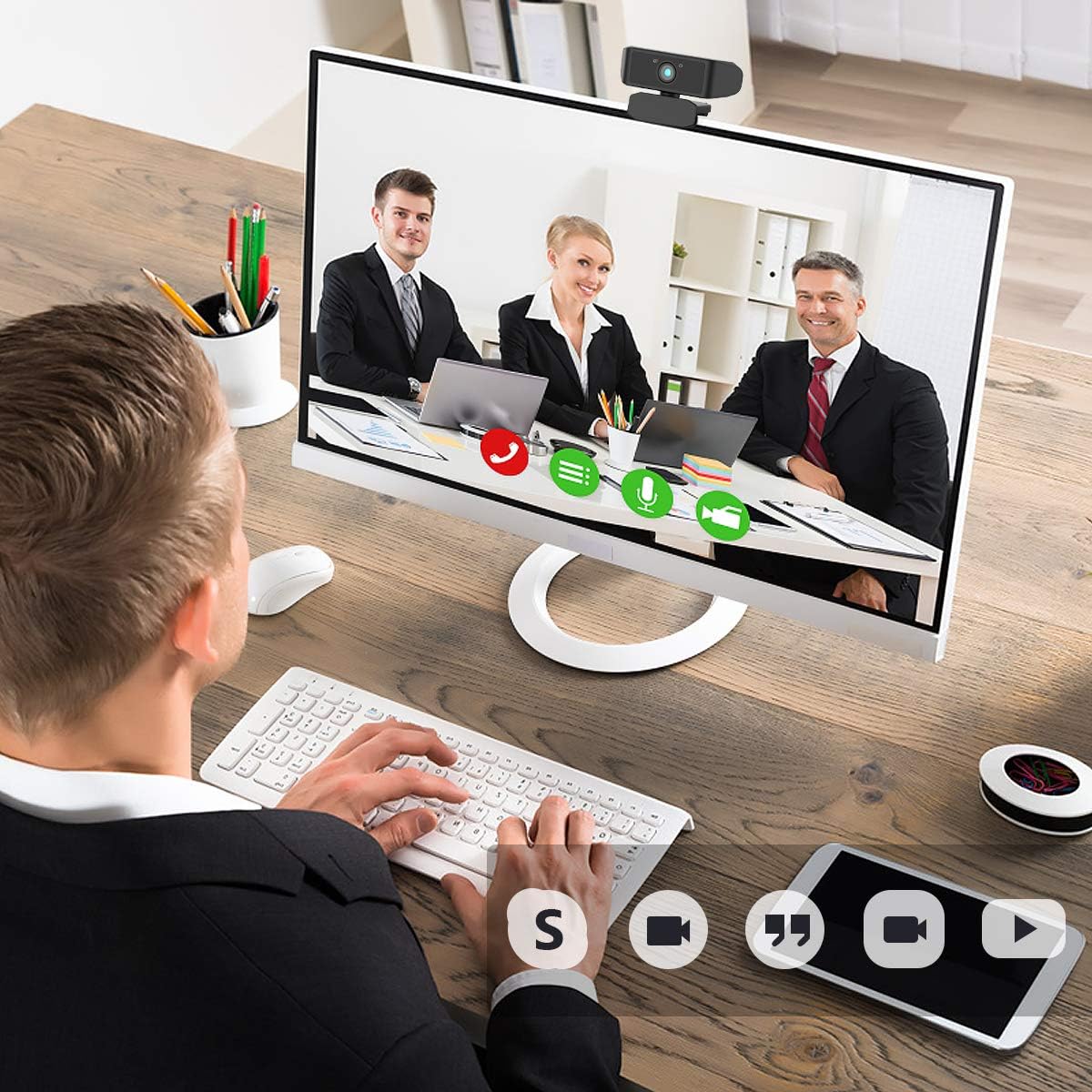If you've ever had a phone conference with other people, then you know why video conferencing is the future of business meetings. It's much more engaging and interactive than a regular phone call, and it can give your team members a chance to see each other in real-time.
However, many companies are hesitant to invest in video conferencing technology because they don't know where to start. That's why we've created this guide for virtual meeting best practices! In it, we'll walk through everything from preparing for your meeting agenda to using software that makes it easy for others on the call to share their screen or webcam with everyone else in the call at once.
What is video conferencing?
Video conferencing is the use of video technology to enable live, interactive, real-time communication. It allows people around the world to meet face-to-face and share information in real time.
It's ideal for business meetings, training sessions or informal gatherings--and it can also be used as an educational tool for students who are unable to attend school due to illness or other reasons.
Why should you invest in video conferencing?
 There are many reasons why companies choose to invest in video conferencing. The most obvious reason is that it saves money and time, but there are other benefits as well:
There are many reasons why companies choose to invest in video conferencing. The most obvious reason is that it saves money and time, but there are other benefits as well:
- Increased productivity: Employees who have access to a virtual meeting platform are more likely to use it than those who don't. When you give employees the tools they need for effective communication, they will take advantage of them--and your company will be better off as a result.
- Improved communication: Video conferencing increases collaboration and makes it easier for teams across different locations or time zones to work together efficiently without any travel required!
- Reduced travel time/costs: Not only does this save money on airfare and hotel stays, but it also eliminates the hassle of getting from point A (wherever your team members are) all the way over into point B (your office).
Preparing for a successful video conference
Before the meeting, take some time to prepare. First, research the topic and make sure that everyone knows what they are talking about. Then, create an agenda for your virtual meeting that includes a list of attendees and their contact information. This will help people arrive prepared, so they don't waste time asking basic questions during the video session. If possible, schedule more than one session if there are many people who need to be involved or if there is going to be a lot of discussion at each meeting; otherwise, try having all participants in one room at once (if it's possible).
Finally--and most importantly--make sure everyone understands what's happening before starting! Reviewing the agenda before starting will ensure everyone has been given adequate notice beforehand so as not to leave anyone out when making decisions regarding next steps after completing this project together over Skype calls instead of face-to-face interactions.
Planning a virtual meeting agenda
 The key to successful virtual meetings is agenda. Before you start, take a moment to think about what you want the meeting to accomplish, who will be involved and how much time you have. If there's one thing we've learned from our experience with video conferencing, it's that if you don't plan ahead of time, things can go awry quickly!
The key to successful virtual meetings is agenda. Before you start, take a moment to think about what you want the meeting to accomplish, who will be involved and how much time you have. If there's one thing we've learned from our experience with video conferencing, it's that if you don't plan ahead of time, things can go awry quickly!
- Prioritize topics: When deciding which topics should be discussed during your meeting or presentation, consider what needs immediate attention and what can wait until later. It may also help if everyone agrees on an agenda beforehand, so there aren't any surprises when it comes time for discussion.
- Decide on a timeframe: While some conversations may run longer than others (especially if they're heated), it's best practice not to go over 30 minutes unless absolutely necessary--and even then try not too! This way everyone gets back into their day without feeling rushed or overwhelmed by information overload at work later in evening hours after returning home from office buildings where most people spend majority time during workdays anyway.
Using video conferencing software
Free conference calls are a great way to connect with your team. You can use it for free, or pay for premium services that offer additional features such as screen sharing and video recording. The best part? It's easy to use and available anywhere you have internet access--no need for special equipment or installation fees!
You might already know that video conferencing is an excellent way to meet new people and build relationships with colleagues who are located far away from each other by allowing them to interact face-to-face over the internet.
Using video conferencing equipment during the meeting
 To ensure a successful virtual meeting, it's important to use the right equipment.
To ensure a successful virtual meeting, it's important to use the right equipment.
- A webcam: This is the device that will capture what you look like and send it to your participants. It should be positioned so that it can see your face clearly while you're speaking, but not so close that other people in the background are visible. If possible, use an external microphone instead of relying on built-in ones because they often pick up background noise as well as voices (this may cause confusion during the meeting).
- Headset or earbuds: These allow others who are listening in on calls with you to hear what you're saying without having their own audio feed piped into their ears through speakers or headphones (which has been known to cause headaches). If someone needs help hearing over background noise during a call--like when there's construction going on outside their office window--they can ask someone else nearby who isn't partaking in said conversation if they could please turn down whatever music/TV show/etc., so everyone involved won't miss anything important being said by anyone else!
Tips to make your virtual meeting more effective and engaging
 The first step to making your virtual meetings more effective and engaging is to use the tools at your disposal. Video conferencing software will help you connect with others in real time, but there are other tools that can also enhance the experience.
The first step to making your virtual meetings more effective and engaging is to use the tools at your disposal. Video conferencing software will help you connect with others in real time, but there are other tools that can also enhance the experience.
Consider using screen sharing software if you want participants to share their screens with one another, or create a virtual whiteboard if you need to collaborate on an idea or project. If you're looking for more ways to encourage participation during meetings, consider using chat tools like Slack or Google Hangouts Chat so that everyone has an opportunity to contribute ideas through text messages instead of just talking out loud over each other.
Another way for leaders who host virtual event and meetings (or those who attend them) is by having an agenda beforehand, so everyone knows what topics need discussing ahead of time--and this goes double if there are several people involved in one meeting because then all parties involved will know exactly where they should direct their attention when listening back later on audio recordings from previous sessions!
Also read:
- What is Norstrat, Its Purpose and Services?
- 4 Ways to Stop Sweltering future Summer
- The founders and members of QUASA International GmbH were invited to the 16th International Conference on Production Lifecycle Management (#PLM19)
Conclusion
We hope these tips have helped you to navigate the world of virtual meetings. Video conferencing can be a great way to enhance your team's communication, but it requires careful planning and attention to detail in order for it to work well. We wish you all the best in your next virtual meeting!






